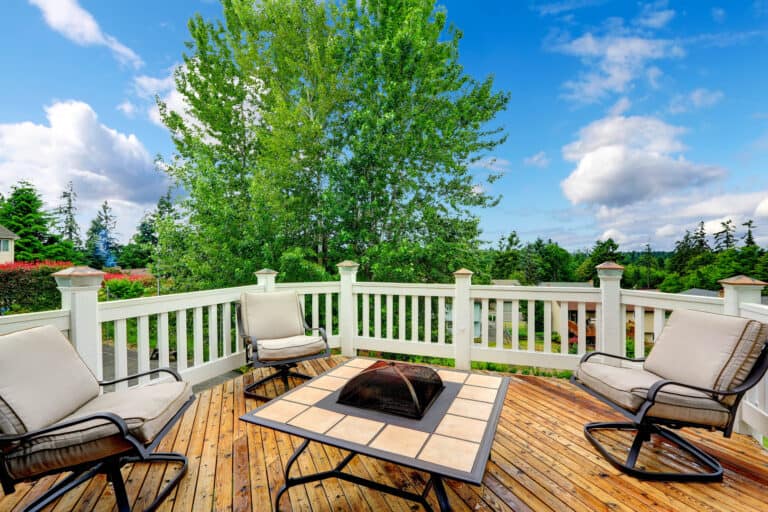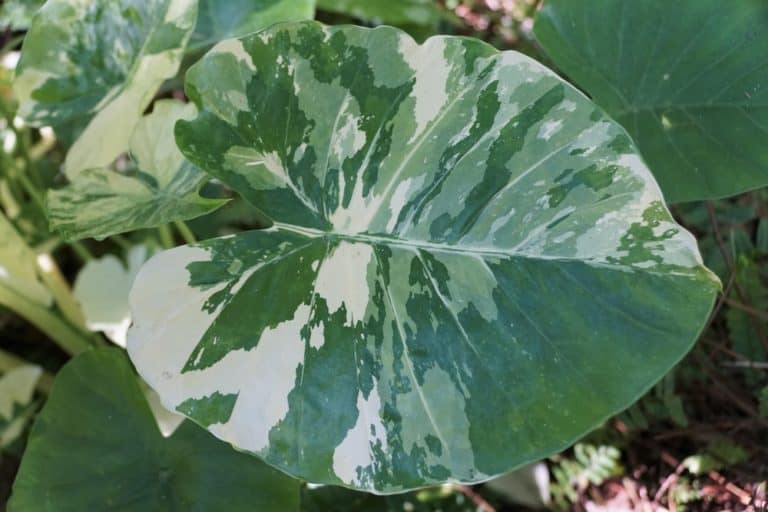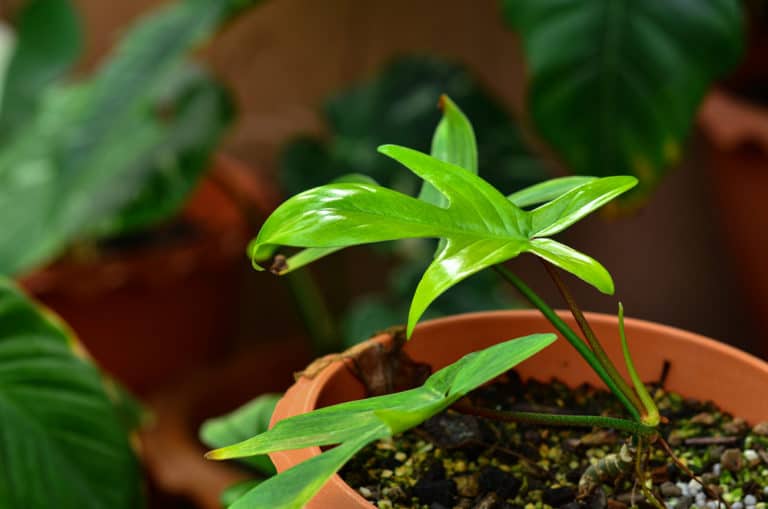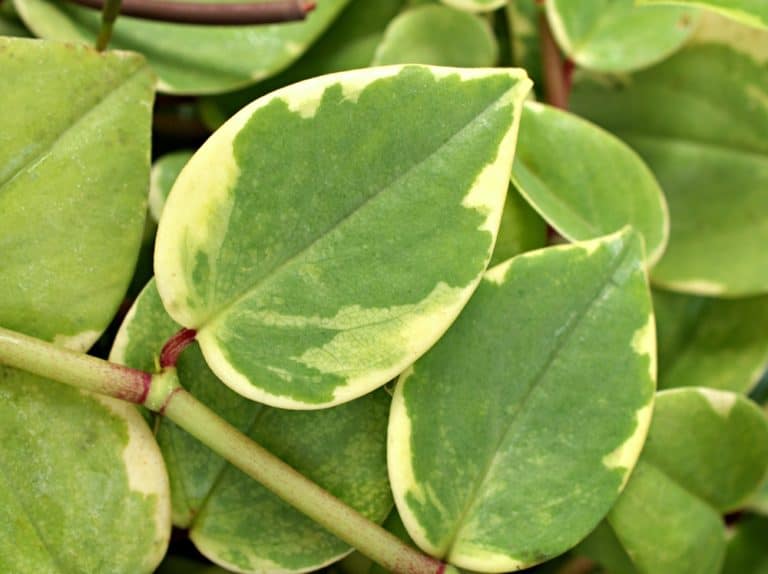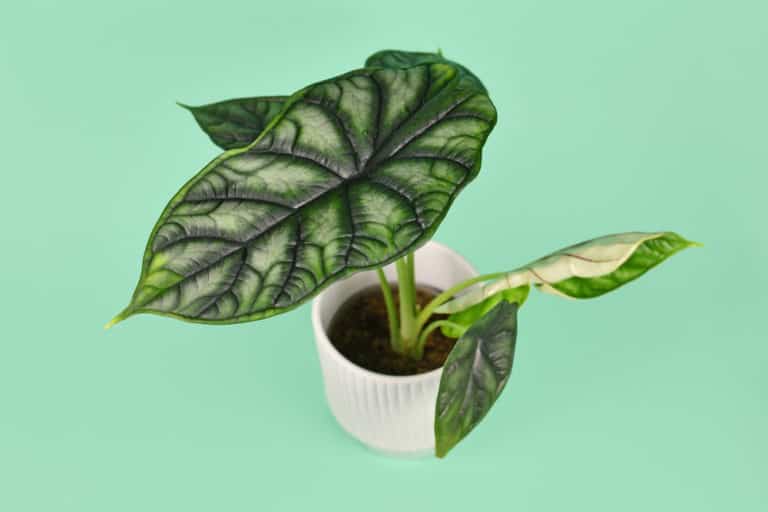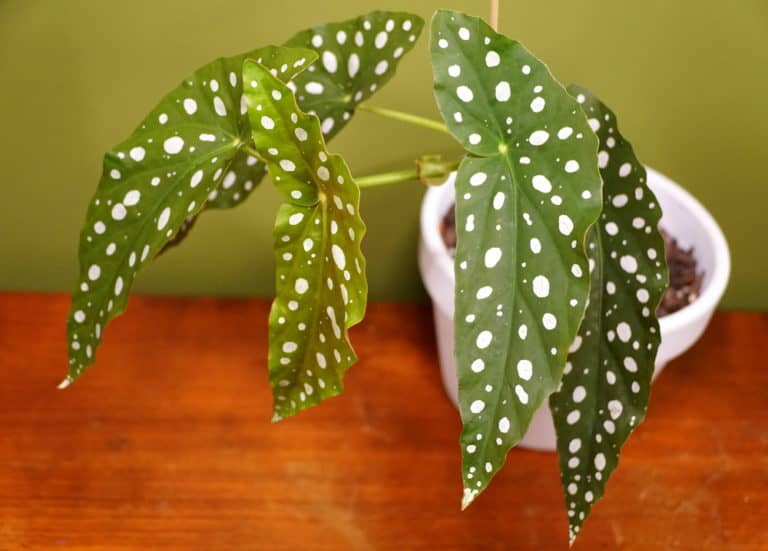Philodendron Imbe ‘Burle Marx’ Care Guide (2024)
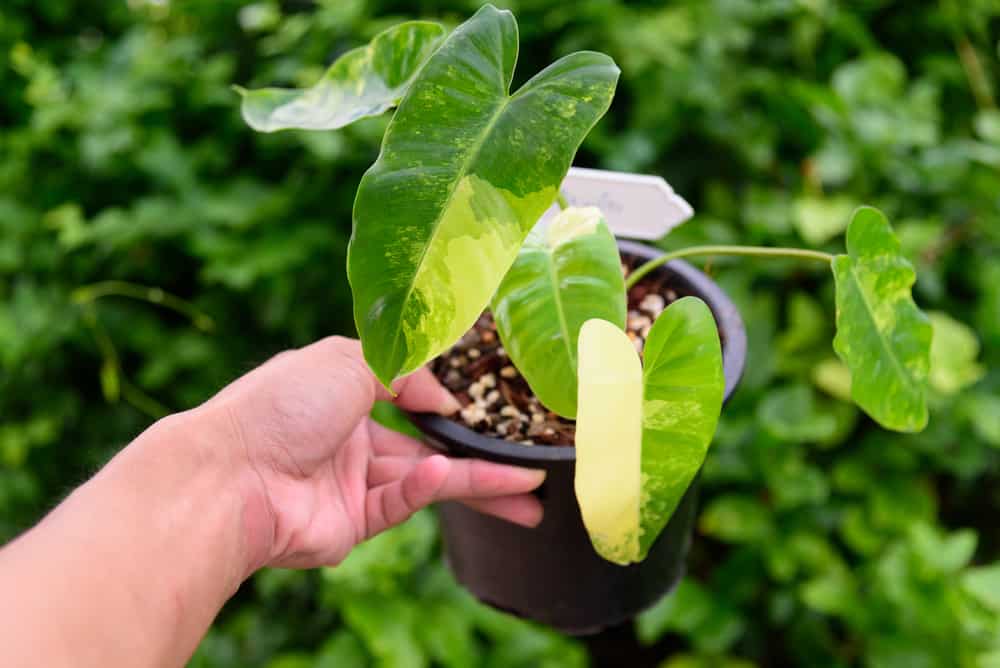
Philodendron Burle Marx is a perfect philodendron when you don’t have a lot of room but want to create a big tropical atmosphere.
It may be a small plant, but its large leaves will soon cover it to create your own indoor rainforest.
And like all philodendrons, it filters harmful chemicals out of the air, giving you a more healthy environment.
| Scientific Name | Philodendron imbe ‘Burle Marx’ |
| Common Name | Philodendron Burle Marx |
| Light | Bright indirect sunlight |
| Watering | Water if the top two inches of soil are dry |
| Temperature | 64 to 79°F (18 to 26°C) |
| Hardiness Zone | 9b to 11 |
| Humidity | 50 to 80% |
| Soil Type | Rich, quick-draining, loamy |
| Soil pH | 5.6 to 6.5 (acidic to mildly acidic) |
| Fertilizing | A balanced feed twice a month in spring and summer |
| Repotting | Every 2 years |
| Pruning | Spring or fall |
| Propagation | Stem cuttings or air layering |
| Toxicity | Toxic to humans and pets |
| Mature Size | 2 to 3 feet as a houseplant |
| Bloom Time | Rarely blooms indoors |
What’s Unique About Philodendron Burle Marx?
The Philodendron Burle Marx plant is a tropical plant native to the rainforests of Colombia, Ecuador, and Brazil.
It was first described in 1957 and named after Burle Marx, a Brazilian architect who pioneered the use of native plants in design.
Philodendron Burle Marx plants are notable for their profusion of large emerald green leaves that cover the plant with layers of foliage.
Growing Philodendron Burle Marx is easy, as it’s relatively undemanding in its requirements.
Because it grows quickly, it will soon become a dominant part of your indoor garden, while never sprawling so much that it overwhelms your space.
Philodendron Burle Marx Care
Philodendron Burle Marx originates in the equatorial rainforests at the north end of South America, and so it will thrive in a similar environment.
However, you don’t have to recreate the tropical rainforest to provide adequate Philodendron Burle Marx plant care.
Good Philo Burle Marx care involves keeping it in dappled light, warm temperatures and high humidity, with regular watering.
Light
In the wild, Philodendron Burle Marx grows on the rainforest floor, in the dappled shade created when the hot tropical sun is filtered through the tree canopy.
Thus, Philodendron Burle Marx light requirements are for bright but indirect light, or between 10,000 and 20,000 lux.
It’s usually possible to satisfy Philo Burle Marx light needs without supplementary lighting.
However, in high latitudes, there may not be enough hours of daylight in winter, in which case a grow light would come in handy.
Since the full sun will damage Philodendron Burle Marx’s leaves, you should look for north or east-facing window to host your plant.
If you only have a southern exposure, keep it well back from the windows.
Watering
In its tropical rainforest home, Philodendron Burle Marx grows in the moist soil of the forest floor.
However, that soil also drains well, so the roots are never in sopping wet conditions.
In your home, water Philo Burle Marx whenever the top 2 inches of the soil are dry.
The most effective Philodendron Burle Marx watering is to slowly pour tepid water over the whole surface of the soil, letting it get fully absorbed.
Philodendron Burle Marx’s watering needs will vary with the time of year. In its active growing season of spring and summer, you will have to water more frequently than in fall and winter.
Temperature
The Philodendron Burle Marx temperature range is from 64 to 79°F (18 to 26°C).
Any heated home should meet the minimum acceptable temperature for Philo Burle Marx, but it will really thrive at the higher end of its range.
It’s easy to move your Philodendron Burle Marx outdoors in summer to let it luxuriate in some real heat and humidity.
However, it has very limited temperature tolerance below 60°F (15°C), and if the temperature drops below 50°F (10°C), it will go dormant. Keep it out of drafts and away from cold windows.
This tender tropical plant has no frost hardiness at all, so it must never be exposed to freezing temperatures.
Humidity
When it comes to your Philodendron Burle Marx humidity requirements, the steamier it is, the better!
The ideal humidity for Philo Burle Marx is upwards of 80%, which is of course far too high for your home.
Luckily, Philodendron Burle Marx will usually grow happily at a humidity level of around 50%.
However, if you find that the tips of the leaves are starting to get brown and crispy, you will need to increase the humidity around your Philodendron Burle Marx.
You can use a pebble tray filled with water, or mist the leaves daily.
Just grouping all your indoor plants together can create a more humid microclimate, but you can also boost the humidity level by placing a small humidifier in their midst.
Soil
The rainforest floor has soil that is full of organic matter but is still spongy and well-draining.
Philodendron Burle Marx soil needs to be porous while retaining enough of the moisture that this plant needs.
The pH level for Philo Burle Marx is 5.6 to 6.5, or acidic to mildly acidic.
You can purchase an aroid soil mix for your Philodendron Burle Marx, or mix together equal parts of perlite, orchid bark, and potting soil.
However, the easiest soil for Philo Burle Marx is simply peat moss. It will maintain an airy soil structure while holding onto an adequate amount of moisture.
Fertilizer
While the plant won’t die without it, you will get larger and better-looking leaves if you regularly use fertilizer for Philo Burle Marx.
A basic liquid fertilizer with a balanced fertilizer ratio of 10-10-10 will ensure healthy growth.
Use the Philodendron Burle Marx fertilizer once every two weeks in spring and summer, while the plant is actively growing.
Dilute the fertilizer to half the recommended strength, and pour it over the soil surface evenly.
Do this shortly after you’ve watered to ensure even absorption.
Alternatively, you can add a layer of leaf compost or worm castings to the top of the soil once a month.
Potting & Repotting
Philodendron Burle Marx repotting should be done every two to three years, or whenever you start to see signs that it’s becoming rootbound.
When roots start poking out the drainage holes, or you can see them winding around the inside of the pot, it’s time for repotting Philo Burle Marx.
You should do this in the spring when it’s just starting its active growing season.
Go up one pot size, or at most 2 inches across. You can use an unglazed pot if you want to ensure that the soil doesn’t stay too wet. The new pot also has to have a drainage hole.
Always use fresh potting soil. In fact, even if your Philodendron Burle Marx isn’t rootbound, you should change the soil every two or three years anyway.
Pruning
There’s really not much need for Philodendron Burle Marx pruning.
The main reason for cutting Philo Burle Marx is to remove dead or damaged leaves, which should be done any time during the year when you see them.
You should not need to trim Philodendron Burle Marx for size since it naturally grows into a compact plant.
However, if you do want to curb its upward or sideways spread, you can prune it by cutting right above a leaf node on the stems.
Do this pruning either in early spring or late fall. Always use sterilized scissors or knives when cutting your Philodendron Burle Marx.
Propagation
The easiest method of Philodendron Burle Marx propagation is with stem cuttings.
Select stems with several nodes, and a few leaves. Cut just below the lowest node, and strip all but the top leaves off.
Put the stems either in a jar of water or a soil tray, and keep them in a warm, humid spot.
Within a month you should see new roots growing. Plant out each little Philodendron Burle Marx in its own pot.
You can also propagate Philo Burle Marx by air layering. Instead of cutting the stem, wrap a quantity of moist sphagnum moss around a node, and cover it with plastic wrap.
Keep the moss moist, and once roots grow from the node, cut the stem 2 inches below that and plant it out.
Also, make sure to check out our in-depth Philodendron erubescens care guide.
Common Problems of Philodendron Burle Marx
There aren’t many Philodendron Burle Marx problems, which is one of the reasons this tropical plant is so popular.
Most problems with Philo Burle Marx can be avoided in the first place by giving your plant optimal growing conditions.
However, if you see that the leaves are looking under the weather, take immediate action to restore your Philodendron Burle Marx to full health.
Pests
Typical Philodendron Burle Marx pests include most of the usual suspects.
The best way to prevent bugs from choosing your Philo Burle Marx as their favorite restaurant is to wipe down the leaves once a month. If you use neem oil or insecticidal soap solution for this, insects will be repelled.
Aphids are small, soft-bodied flying insects that congregate under the leaves. They can be vacuumed up with a hand vac.
Mealybugs form clumps of white tufts under the leaves. Wipe them off with a cotton ball soaked in rubbing alcohol.
Spider mites leave yellow bumps on the leaves and sometimes spin their sticky webs. Give your Philodendron Burle Marx a good showering.
Scale insects look like little brown bumps on the stems or leaves. Scrape them off.
Diseases
Most Philodendron Burle Marx diseases can be avoided by not overwatering. Fungal and bacterial diseases thrive in wet environments.
If the leaves of your Philo Burle Marx are turning yellow and drooping, and the stems feel soft, pull the root ball out of its pot.
If you see black roots with a foul smell, you’ve got root rot. Cut away all affected parts of the plant, and repot it in fresh soil after disinfecting the pot.
Leaf spot can be a bacterial or fungal disease. If your leaves have irregular black, brown, or yellow spots, it’s a sign that you’re growing your Philodendron Burle Marx in too wet conditions.
Cut off all the affected leaves, and spray the plant with a solution of half a teaspoon of baking soda in a gallon of water.
Growing Problems
Most growing problems are a signal that you need to get more in tune with your Philodendron Burle Marx.
What you think is a sick plant is just one that needs more ideal growing conditions. Improve its environment and watch it return to full health.
Browning leaves could mean that your Philodendron Burle Marx is getting too much or not enough water. Check the soil and proceed accordingly.
Yellow leaves can indicate that your Philodendron Burle Marx is too hot or too cold, getting too little fertilizer, or too much light.
Brown edges probably mean that you’re using too much fertilizer. To get rid of a build-up of fertilizer salts in the soil, run water through the pot for about ten minutes, and then let it drain thoroughly.
Toxicity of Philodendron Burle Marx
Philo Burle Marx is toxic to humans and animals.
Its toxicity is due to the calcium oxalate crystals in all parts of the plant. These tiny crystals are very sharp and will irritate or damage tissues.
While you can still grow a Philodendron Burle Marx in a home with children or pets, you should take precautions.
For Humans
Philodendron Burle Marx is toxic to humans.
While an adult is unlikely to try eating a Philodendron Burle Marx leaf, children will sometimes get into things they shouldn’t.
If your child just complains of some pain around their lips, simply clean off any plant material, and give them something icy to soothe the pain.
However, any reaction such as a swollen tongue or difficulty breathing needs to be treated by medical professionals, so take them to the emergency room.
The sap also contains crystals, so you should take precautions when cutting your Philodendron Burle Marx. If any sap gets on your skin, rinse it off to prevent a rash.
For Pets
Philodendron Burle Marx is toxic to all household pets.
If your cat, dog, or rabbit shows symptoms such as vomiting, diarrhea, excessive drooling, or wheezing, you should take it to the veterinarian as soon as possible.
Without prompt treatment, your pet may suffer organ damage.
It’s best to prevent such incidents before they happen by finding a spot for your Philodendron Burle Marx that small creatures cannot reach.
Since Philodendron Burle Marx only reaches a full height of 2 feet, you could place it on a high ledge out of reach. It can also be grown in a hanging basket.
Philodendron Burle Marx Appearance
Adding a Philodendron Burle Marx to your indoor garden is a great way to quickly create a tropical jungle feel in your home.
The Philodendron Burle Marx appearance is that of a compact but bushy philodendron with huge green leaves, quickly growing to fill in any gaps in your houseplant display.
Foliage
The foliage of Philodendron Burle Marx is big and beautiful.
When grown indoors, each leaf is 12 to 24 inches long, and about 3 inches wide, with an elongated heart shape.
On a Philodendron Burle Marx plant in the wild, the leaves can get even larger.
New leaves are a bright yellow-green, before deepening to emerald green on top, with a paler shade of green on the underside.
They are thick and leathery, with a glossy surface on top.
It’s best to maintain that glossy look with a monthly wipe-down with a damp cloth. Add neem oil or insecticidal soap to repel insects.
Flowering
Philodendron Burle Marx flowering usually only occurs on mature plants grown outdoors in tropical zones.
They bloom in early summer. The Philo Burle Marx flower is small, with a pink spathe enclosing a white spadix.
Blooming is extremely rare on a Philodendron Burle Marx grown indoors.
If you give it the absolute ideal conditions year-round it might flower, but it’s never going to be the reason for buying a Philodendron Burle Marx plant.
The gorgeous, glossy leaves are always going to be the star of the show.
In fact, if you do have other tropical plants that do flower, the solid wall of greenery created by a Philodendron Burle Marx plant will make a great backdrop.
Size and Growth
When you’re growing it indoors, you can expect the full size of Philodendron Burle Marx to top out at about 2 feet tall, and 2 or 3 feet wide.
It has a rapid growth rate, and can grow 2 to 4 inches a week during its growing season in spring and summer.
Philodendron Burle Marx has a thick central vine, which the leaf stems branch out from. As the leaves develop, it becomes quite dense and bushy.
Because the leaves are so large and grow so profusely, it’s always a good idea to use a sphagnum moss pole for extra support.
Philodendron Burle Marx Fragrance
There is no Philodendron Burle Marx fragrance. The foliage has no scent, and flowers are exceedingly rare on potted plants grown indoors.
However, Philodendron Burle Marx is very beneficial for your indoor environment. It is effective at removing contaminants such as formaldehyde from the air.
Since formaldehyde is present in many manufactured goods in the home, that’s a really positive benefit.
You may actually prefer a plant without a scent, especially if you live in a small apartment or are sensitive to fragrances.
If you want, you can cheat and give your Philodendron Burle Marx a scent by adding a drop or two of essential oil to the solution you use to clean its leaves every month.
Suggested Uses for Philodendron Burle Marx
Philodendron Burle Marx is a great plant to use indoors to add a strong tropical feel to any home or office.
You can use a hanging planter to keep one even in a small bathroom, where it will love the extra humidity.
Putting one in your bedroom will let you benefit from cleaner air as you sleep.
You can place it on its own as an accent plant, or combine it with other foliage and flowering tropical plants in one large display.
Even if you’re not gardening in a tropical zone, the heat and humidity of summer will greatly benefit your Philodendron Burle Marx. Move it out to the balcony or patio to create a leafy oasis.
FAQ
What is Philodendron Burle Marx?
Philodendron Burle Marx is a tropical vining plant native to the equatorial rainforests of South America. It was first identified in 1957 and is a popular houseplant.
How to identify Philodendron Burle Marx?
Philodendron Burle Marx has narrow, heart-shaped glossy green leaves up to 2 feet long, growing in profusion on a compact upright vine with a wide, bushy profile.
How to care for Philodendron Burle Marx?
Philodendron Burle Marx should be grown in consistently moist soil in a spot with bright, indirect light, in as warm and humid an environment as possible.
How to grow Philodendron Burle Marx indoors?
Philodendron Burle Marx can be successfully grown as a potted plant, as long as it is kept in a warm, humid environment and watered and fertilized regularly.
How to grow Philodendron Burle Marx outdoors?
Philodendron Burle Marx can be grown outdoors year-round in tropical or sub-tropical zones. In temperate zones a potted plant can be moved outdoors in summer.
How fast does Philodendron Burle Marx grow?
Philodendron Burle Marx has a fast growth rate, growing as much as 2 to 4 inches a week in its growing season in spring and summer.
How tall does Philodendron Burle Marx grow?
Philodendron Burle Marx maintains a compact size when grown indoors, usually reaching a maximum height of 2 feet and spread of 2 to 4 feet.
How to make Philodendron Burle Marx grow faster?
Philodendron Burle Marx will grow its fastest when it is given ideal conditions, especially high heat and humidity, and bright light that falls just short of sun directly hitting the leaves.
How to stake Philodendron Burle Marx?
Philodendron Burle Marx should be staked with a sphagnum moss pole. This gives the aerial roots something to hang onto, and will provide extra support for the weight of the leaves.
How to pot Philodendron Burle Marx?
Philodendron Burle Marx should be potted in porous, moist soil. You can use any type of clay or plastic pot as long as it has good drainage.
How to revive Philodendron Burle Marx?
If your Philodendron Burle Marx’s soil has dried out completely, submerge the whole pot in a pail of water until the soil has absorbed all the water it can.
Why is my Philodendron Burle Marx dying?
If your Philodendron Burle Marx has a fungal or bacterial disease, it’s from too-wet soil or leaves. Cut off all infected parts and repot it in fresh soil.
Why is my Philodendron Burle Marx drooping?
If your Philodendron Burle Marx is drooping, it could be getting too much water, or not enough. Check the moisture levels in the soil and proceed accordingly.
How cold can Philodendron Burle Marx tolerate?
Philodendron Burle Marx will start to slow down below 60°F (15°C), and at 50°F (10°C) it will start to suffer real damage. Freezing temperatures will kill it.
How to get rid of pests on Philodendron Burle Marx?
It’s best to prevent insects on your Philodendron Burle Marx by wiping down the leaves once a month with an insecticidal soap or neem oil solution.
Is Philodendron Burle Marx toxic to cats?
Yes, Philodendron Burle Marx is toxic to cats. If your cat eats some of the foliage and starts vomiting, wheezing, or has diarrhea, take it to the vet immediately.
Is Philodendron Burle Marx toxic to dogs?
Yes, Philodendron Burle Marx is toxic to dogs. If your dog starts drooling excessively, wheezing, or vomiting, take it to the veterinarian as soon as possible.
Is Philodendron Burle Marx toxic to children?
Yes, Philodendron Burle Marx is toxic to children. If your child develops symptoms including a swollen tongue and constricted airways, take them to the emergency room.
Is Philodendron Burle Marx toxic to humans?
Yes, Philodendron Burle Marx is toxic to humans. Adults are most likely to develop a rash from contact with the sap. Rinse it off your skin.
Does Philodendron Burle Marx have a scent?
No, Philodendron Burle Marx does not have a scent. The foliage has no fragrance and it is exceedingly rare for a plant to flower when grown indoors.

